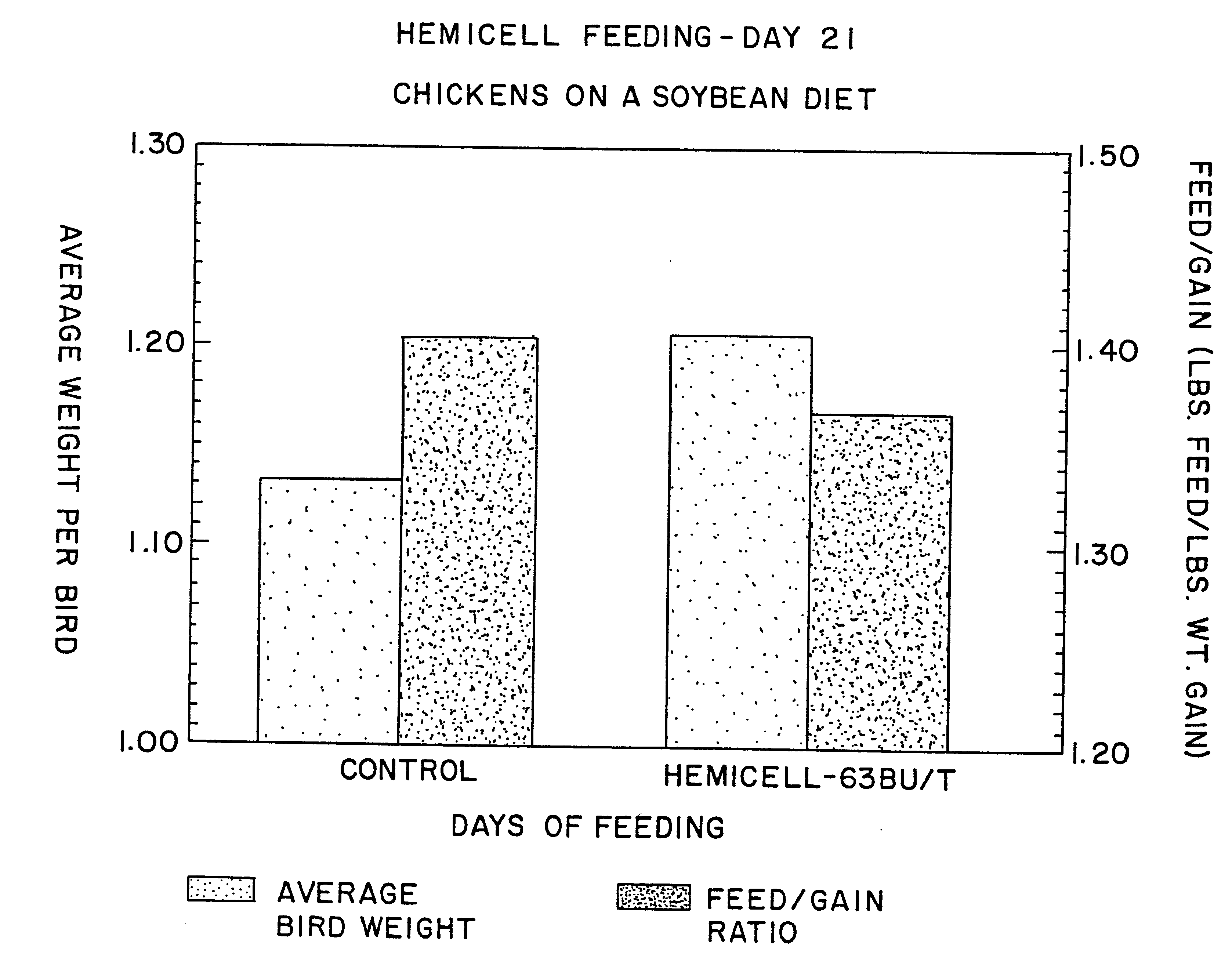Hemicellulase supplement to improve the energy efficiency of hemicellulose-containing animal feed
a technology of hemicellulose and hemicellulose, which is applied in the direction of fruit/vegetable preservation using acids, food preparation, enzymology, etc., can solve the problem of costly storage facilities of feed components, and achieve the effect of enhancing energy content when consumed
- Summary
- Abstract
- Description
- Claims
- Application Information
AI Technical Summary
Benefits of technology
Problems solved by technology
Method used
Image
Examples
example 1
Isolation of Hemicellulase-Producing Microorganisms from Soil
Soil samples collected from both a tropical rain-forest and a temperate garden were added to selective enrichment broth in a 10% w / v concentration. The cultures were shaken in baffled Erlenmeyer shake flasks at 37.degree. C. for four days. Four dilutions [1:10, 1:20, 1:800 and 1:50,000] of the initial cultures were made with fresh selective enrichment broth and incubated at 37.degree. C. for four days. The 1:50,000 dilution was used to prepare a dilution series (10.sup.-1 to 10.sup.-8) in 0.85% NaCl which were plated out on selective enrichment agar and incubated at 34.degree. C. for 5-7 days. Following incubation, isolated colonies were selected from the plated cultures and streaked for purity three successive times on a suitable agar medium. Nine isolates from soil collected from a tropical rain-forest and 24 isolates from soil collected from a temperate garden were selected as a result of this screening process.
example 2
Screening of Soil Isolates for Hemicellulase Activity
Each purified isolate from the tropical rain-forest soil was transferred to a shake flask containing selective enrichment broth and shaken for 48-72 hours at 34.degree. C. After incubation, the culture was centrifuged for 20-30 minutes at 10,000 rpm (4.degree. C.). The resultant supernatant was filtered sequentially through a 0.8- and a 0.45-micron filter to recover crude enzyme free of microbial cells. Each purified isolate from the temperate garden soil was transferred to tubes containing selective enrichment broth and shaken 12-48 hours at 34.degree. C. After incubation, the cultures were centrifuged and filtered as described above. The crude enzyme solution was added to tubes containing 5 mL of a cross-linked guar preparation (5.0 g guar, 2.0 g (NH.sub.4).sub.2 SO.sub.4 and 0.6 g sodium tetraborate per 400 mL water, pH 9.5) and incubated for at least 1 hour in a water bath at 39.degree.-40.degree. C. To measure enzyme activity...
example 3
Production of Commercially Useful Quantities of Hemicellulase
A single, isolated colony of Bacillus circulans (CMG1240) was inoculated into a 500 mL Erlenmeyer baffled shake (pre-seed) flask containing 50 mL of brain heart infusion broth. The inoculated flask was shaken (300 rpm) while incubating for 12-16 hours at 35.degree. C. After incubation, the entire volume of the pre-seed flask was aseptically transferred to a 4 L Erlenmeyer baffled shake-flask (seed) containing one liter of seed medium. The seed-flask was incubated with shaking for 12-16 hours at 35.degree. C. The entire volume of the seed flask was aseptically transferred to a 14-liter fermenter containing 9.0 liters of fermentation broth. The fermenter was maintained at 40.degree. C., <20% dissolved oxygen and 500-1000 rpm. Guar gum was added to make a final concentration of 0.05% to the fermenter two or three times during the growth phase and once (0.5%) during the stationary phase to induce enzyme production. After 1-7.5...
PUM
| Property | Measurement | Unit |
|---|---|---|
| temperatures | aaaaa | aaaaa |
| pH | aaaaa | aaaaa |
| pH | aaaaa | aaaaa |
Abstract
Description
Claims
Application Information
 Login to View More
Login to View More - R&D
- Intellectual Property
- Life Sciences
- Materials
- Tech Scout
- Unparalleled Data Quality
- Higher Quality Content
- 60% Fewer Hallucinations
Browse by: Latest US Patents, China's latest patents, Technical Efficacy Thesaurus, Application Domain, Technology Topic, Popular Technical Reports.
© 2025 PatSnap. All rights reserved.Legal|Privacy policy|Modern Slavery Act Transparency Statement|Sitemap|About US| Contact US: help@patsnap.com



